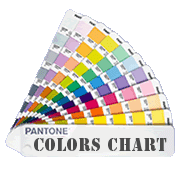With all the websites and all the blankets show there how do you know which one to choose?
First of all ignore the name of the blanket. Different vendors call the same type of blanket Economy or Deluxe, or even Premium.
When you shop for moving blankets, name is not important. You need to match the quality of the moving blanket to how you are planning on using it.
There are three basic qualities to look for in a moving blanket:
1. Outer fabric
2. Thickness or amount of filler ( usually this is the weight of the blanket)
3. Binding material.
Of course there are other factors such as size and color, but those are quite obvious. Zigzag stitching is also pretty standard.
The outer fabric can be:
Nonwoven fabric which is quite soft and nice. It will serve well to move an item once or twice, but it is not very durable and tears easily. Blankets made with this outer fabric usually do not have a lot of filler. If you need to put your furniture in storage or use it to ship a container overseas - they work well for you.
Polyester or Terylene, This is the most used fabric. It is quite durable, soft, flexible and inexpensive. Blankets made with this out fabric can be used for any kind of moving, they can be machine washed, or with garden hose, dry out easily.
Cotton/Polyester Mix: this is usually 20% cotton 80% polyester Mix.
Filler.
For all moving blankets the filler is the same "recycled cotton". It usually also contains other synthetic fibers. Amount of filler, or thickness of the blanket, is very important and it can be determined by the weight of the blanket. Weight of the blanket usually shown in pounds. Some vendors may show it as weigh of "Filler/Per Yard" but if you look further on the product description you will find Weight per blanket in Lbs.. Filler per Yard is actually very confusing, because it does not match the weight per blanket that is shown by the same vendor for the same blanket. Even representatives of the companies that use "Filler per Yard" get confused.
For shipping purposes, in order to save space, blankets are compressed and tied tightly in bundles by dozen. When you first take them out they might look thin. Just shake them well, use it few times. filler will absorb air and the blanket will become thicker and fluffier. If you are planning to hang the blanket on the wall as a sound proof it makes sense to "rough them up" a little first.
Binding Material.
Any kind of material can be used for binding, but usually Nonwoven fabric mostly used as the cheapest option. It works fine for most applications, but this can be a problem when you want to wash blankets and dry at a high temperature - the binding will melt.. So be careful!























